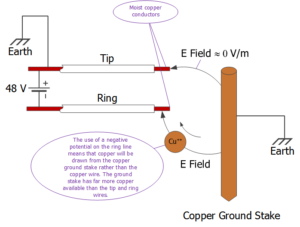Some of this doesn't make sense.
First, I find it hard to believe that anyone would ground the positive lead of the battery. It's very common for the negative terminal of DC powered devices to be connected to ground, which is going to be a problem.
Here are a few resources you might enjoy reading regarding positive ground electrical systems:
Specifically, what is the difference between these two Renogy 10A charge controllers? They are both identical in appearance, but one is "positive ground".

diysolarforum.com
I do not understand this and I read how people return the SCC if it is a positive and not a negative. 1. What is the recommended setup, pos or neg? 2. What is the best or preferred one, pos or neg? 3. Which SCC are affected by this (requirement?) PWM or MPPT or Both? 4. How do I test/determine...

diysolarforum.com
Hi, I've got a question about positive ground PMW charge controllers. I'd like to install an inline fuse and a cut off switch between my 30 amp HQST charge controller and the PV panels (2 100 watt Newpowa compact panels) This charge controller is a positive ground. Normally, if this was a...

diysolarforum.com
Hi everyone, I am getting ready to order the final items needed to do my solar install. I would like to know if there is any difference between these two charge controllers; both are made by the same company; one is a Will recommendation and the other is not; one is less expensive; and one...

diysolarforum.com
I ordered the positive ground mppt a while back before I even started setting anything up. I assumed it was all negative ground as that is/should be the standard but unfortunately i was wrong again. Missed the fine bold print lol I saw some manufacturers suggest grounding the positive from the...

diysolarforum.com
Positive ground electrical system in old cars
www.restore-an-old-car.com
I just got a classic Ford 8N tractor running again. Someone trying to be helpful flipped the battery around, connecting negative to ground. This made the engine crank backwards! So I had spark,

mechanics.stackexchange.com

www.bugeyeguys.com
Today, we use wires with excellent insulation and these moisture-induced corrosion arguments carry less weight. Back in the old days, however, telecom wiring had cloth-based insulation that would g…
www.mathscinotes.com
I don't contend that it's common, but the fact that it exists and there are still products sold today that support this system type means we have to be aware of it when designing, upgrading, or maintaining a solar power system.
Just to give an example, if you powered a Pi from a buck converter connected to your batteries, and positive is connected to ground, then the "ground" on the pi would actually be -5V WRT ground. That's not going to go well if you connect a USB port to something that has the negative voltage terminal connected to ground.
Exactly. If you're working on a solar system then you need to be aware of whether it follows the normal convention or not. Typically the end user doesn't know or care, and typically both terminals are "floating" with respect to ground.
However, high side switching with a P type mosfet is slightly more costly than low side switching with an N type mosfet, and so very cost-efficient controllers (ie, cheap junk) may choose a positive ground.
Regardless of the system ground, isolation is generally a good idea and solves a number of other problems in addition to possible positive ground systems. If you want to power your raspberry pi from your battery bank, use an isolating buck converter. If you need to measure voltage or current, use something with galvanic isolation.
Second, I don't think the batteries should be connected to the metal case, so there should be no chance of the case getting energized by the batteries or inverter. The case should be electrically isolated from the rest of the system.
It's better if they're not connected to the enclosure, I agree. In general grounding of either leg of the power supply shouldn't be done, and if it is done it should occur at only one point in the system to avoid ground currents.
But in a negative or positive grounded system you have no choice. If you connect your equipment grounds together, and one piece of equipment connects negative or positive to ground, then the rest of your enclosures are connected to the power source.
If you do connect, say the negative terminal of the battery to the case, and ground the case, you've now made a second electrical connection between your battery and the inverter, which could bypass your fuses/breakers. That's not a major problem if all your fuses, switches, breakers, and relays are on the positive side, but are you sure that's the case in the inverter? Low-side MOSFET switches are very common, especially in high current circuits.
Correct. A better design doesn't ground either side of the battery.
It's also good practice to fuse both positive and negative terminals with a linked breaker, though many systems still only fuse one side.






